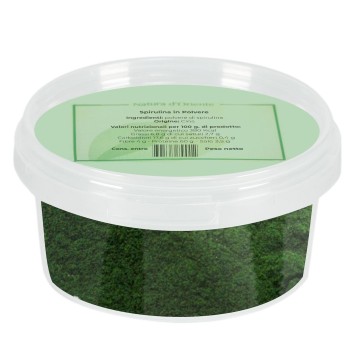It is probably one of the most nutritious fruits of all, i.e. rich in beneficial substances for our body. They are highly valued for their nutritional and antioxidant qualities, but also as delicious and tasty berries. Goji berries are shown in this dried version as small red fruits with a sweet but slightly sour taste.
Goji berries: properties and benefits
These particular berries bring various antioxidant benefits to our body, counteracting cellular oxidation and skin aging. In fact, antioxidants help our body fight free radicals, responsible for cell damage and aging. A resource also as anti-aging support, in a diet designed to avoid the damage of age on our skin and body. Lycium barbarum berries help strengthen the immune system and are a perfect ally in a healthy diet, as they are highly nutritious. They are an excellent source of vitamins and minerals since, even in the dried version of goji berries, they contain fiber, vitamin A, vitamin C and iron. Some antioxidants such as zeaxanthin help protect our eyesight, as well as the body's immune defenses. Goji berries can be an effective dietary supplement, which promotes regular gastrointestinal functions. The nutritional properties of the fruit also represent a source of energy, which helps reduce stress and fatigue by facilitating physical performance. In ancient times, goji berries were used in oriental medicine to induce rest and reduce stress, improving the quality of sleep.
Origins and History of cultivation
Goji berries come from a shrub native to China, Lycium barbarum. Today this plant is grown not only in Central and South-Western Asia, but also in other warm regions including North America, Australia, the Mediterranean area. The name Goji comes from the Mandarin Chinese name gouqi. The other name, wolfberry or wolfberry, perhaps derives from the Lycium plant, deriving from the Greek Lycos or wolf. In Asia, goji berries have been consumed for centuries both as food and as a natural resource for well-being and longevity. In the past, these bright orange-red fruits were used as natural medicines to treat health problems including high blood sugar or high blood pressure, fever, and prevent aging. Goji was also popular in Asian countries such as Korea, Japan and Vietnam. To this day, they continue to be considered excellent supplements and herbal remedies. They are eaten raw, cooked or as dried goji berries (similar to raisins). They are frequently added to herbal teas, fruit or vegetable juices, various recipes and blends of so-called "superfoods" together with other fruits or extracts (often in powder form).
Plant and berries
Goji berries derive from the Lycium barbarum plant, of the Solanaceae family. The tree grows to a height of about 3 meters, and bears small elliptical berries with an orange-red or dark red color, 1-2 cm long. The flavor of the fruits varies from bitter to sweet. They are harvested between late summer and autumn, dried until the skin shrinks, becoming dry and hard – while the pulp remains soft. Goji is divided, in fact, into two subspecies, known as Lycium barbarum and Lycium chinense var. potaninii.
Nutritional values of goji berries
This fruit contains about 350 Kcal per 100 grams, in dehydrated form it has little fat, but provides sugars, minerals, proteins (about 14 g), vitamins and fibers (about 13 g ). 100 grams of goji berries, for example, provide in particular iron (about 6 mg), vitamin A (about 26800 IU) and vitamin C (about 48 mg), and elements such as carotene, thiamin, riboflavin, lutein, lycopene, zeaxanthin, betaine. Other minerals present in the berries are sodium, potassium, calcium, iron, zinc, selenium, The nutritional values of dried goji berries
How to consume goji berries in the kitchen or as a snack
This fruit has been known for centuries in Asian cuisine, appreciated for the sweet to sour varieties it can add to recipes. To date, it is used a lot in the dehydrated goji berry version, ideal for preserving and eating them as a hunger-busting snack. Goji Lycium Barbarum berries come in dried form, perfect to be inused in mixes of dried fruit and cereals, in yoghurt for breakfast or to flavor teas and infusions. They are also used for sweet toppings on ice cream, muffins, cupcakes, cakes and other desserts. They can be added as ingredients in baked goods – biscuits, bread, etc. For those who want to use the berries in drinks and smoothies, they can be softened and rehydrated by soaking them for a few minutes. They will become special little touches Rehydrated goji berries also become an ingredient for fruit salads or sweet and sour recipes, as well as useful in savory dishes such as soups and sauces. The dried berries are also suitable for creating energy bars, or in cocktails to give an original and exotic touch.
Goji berries: side effects and contraindications
To avoid undesirable effects, it is necessary not to exceed the doses of the berries. Excessive intake can cause laxative effects, heartburn, nausea. In high doses, goji berries may interact with some blood-thinning, diabetes or high blood pressure medications. Allergies must be taken into account, which can rarely occur in people allergic to other fruits. Caution is advised in pregnant or breastfeeding women.











 No reward points for this product.
No reward points for this product.






